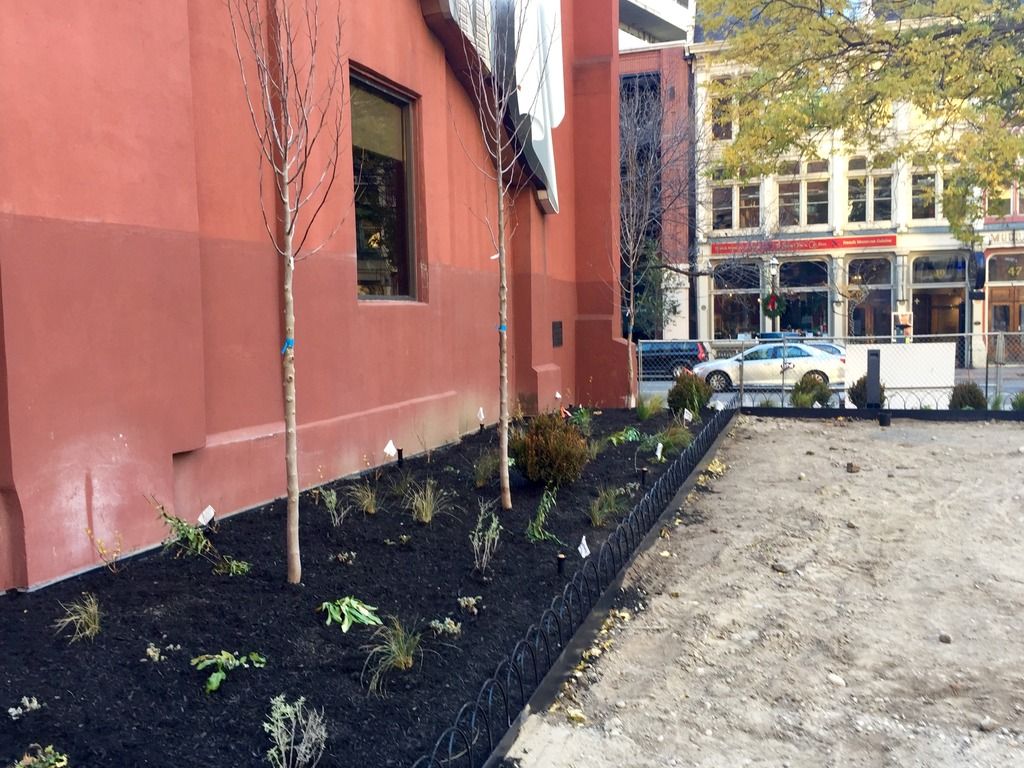The mural is there so that there wouldn't be a blank wall looming over the park. To understand why this wall was an issue, you need to understand the local history. When the Gooderham Building was built in 1892, no one saw that wall. The entire block where Berczy Park is located was built up with commercial buildings, similar to the block on the southside of Front Street. According to Unbuilt Toronto, the buildings around the Gooderham Building were razed to make way for a cultural district of performing arts venues in the 1960s ahead of Canada's centennial in 1967.
It was envisioned to be similar to NYC's Lincoln Center or Montreal's Place des Arts, as the idea of building a district of cultural venues was popular at the time as a form of "urban renewal". For a while, there was a parking lot next to the flatiron building. Ultimately, the funding didn't come through to build all the performing arts venues. Only the St. Lawrence Centre and the O'Keefe Centre (now the Sony Centre) were built.
By the 1970s, Jane Jacobs' influence resulted in a desire to rebuild the neighbourhood as a mixed-income, mixed-use neighbourhood that was walkable, pedestrian friendly, vibrant and attractive. The historic landmarks that survived the 1960s urban renewal wave were restored. Infill projects were built around the Esplanade. Berczy Park was built. The mural was installed so that pedestrians wouldn't have to see the large blank side wall of the iconic flatiron building that wasn't supposed to be seen by anyone.
It's a popular mural for its tromp d'oleil effect, reminding us that no matter how elaborate, facades are thin ornamental layers that are applied to buildings. There's far more to a building than meets the eye on the street. But rather than being overtly serious and philosophical, it's playful and makes the park seem more lively and colourful.
There's no where more appropriate for the mural than a neighbourhood of old buildings and facades. I've seen photos of the mural voted to the front page of Reddit, which has a global audience. If you look closely, you'll notice that the windows in the centre are real. It may not be possible to add more windows without extensive modifications to the building because of its structural form. Perhaps we can make the wall better, but it's a great mural that has become a distinctive feature of the building on its own.
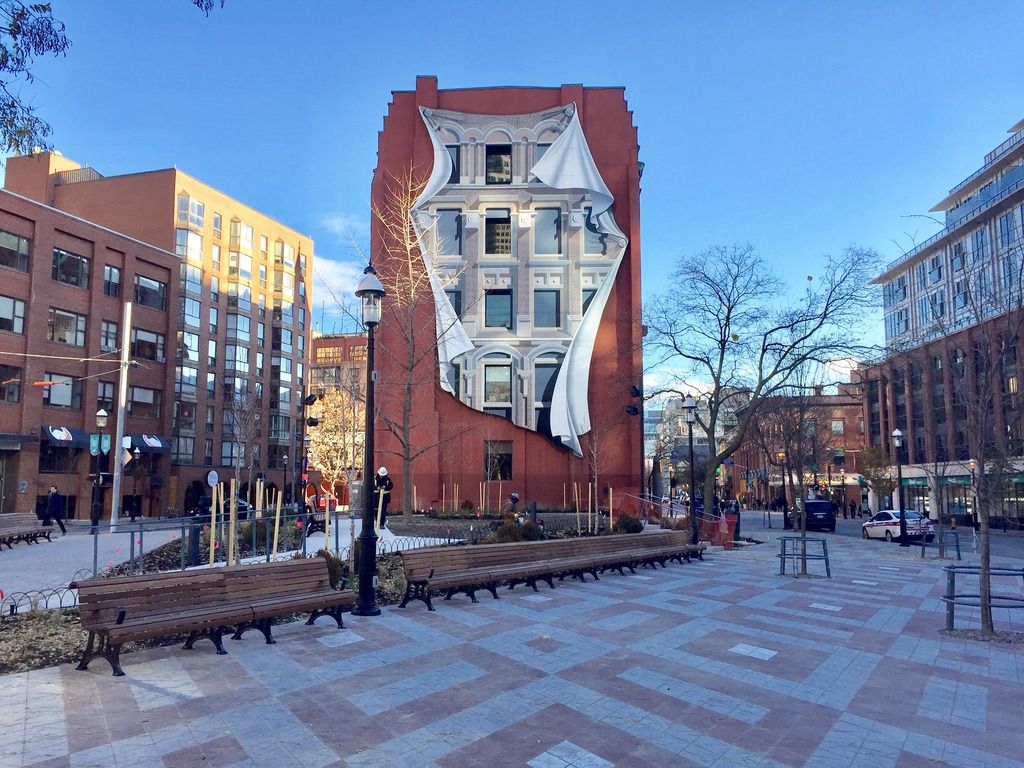
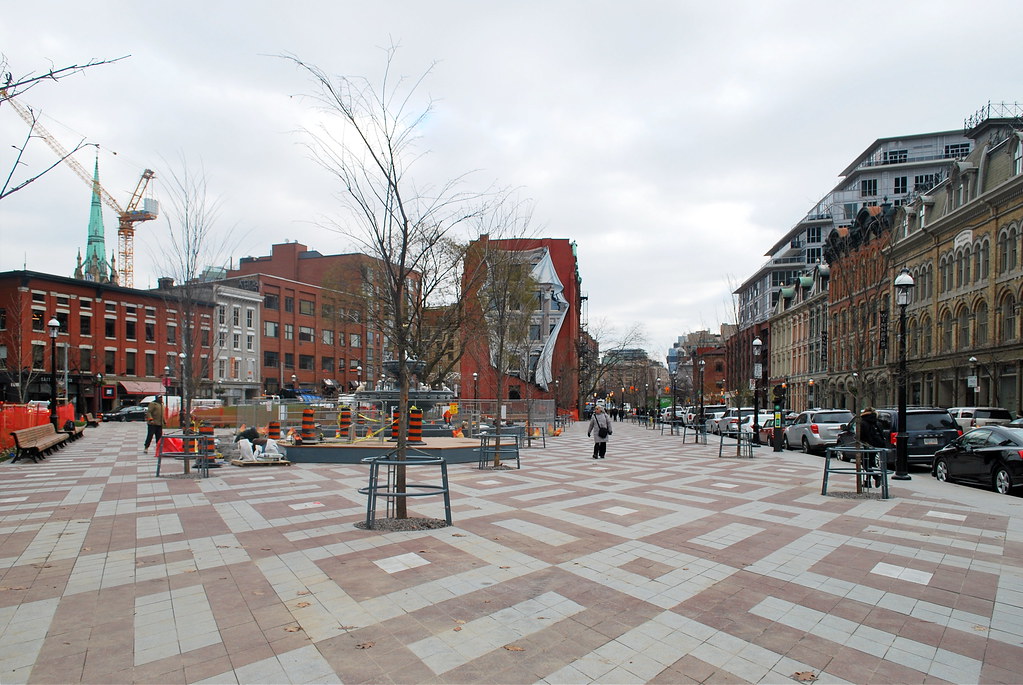 Berczy Park
Berczy Park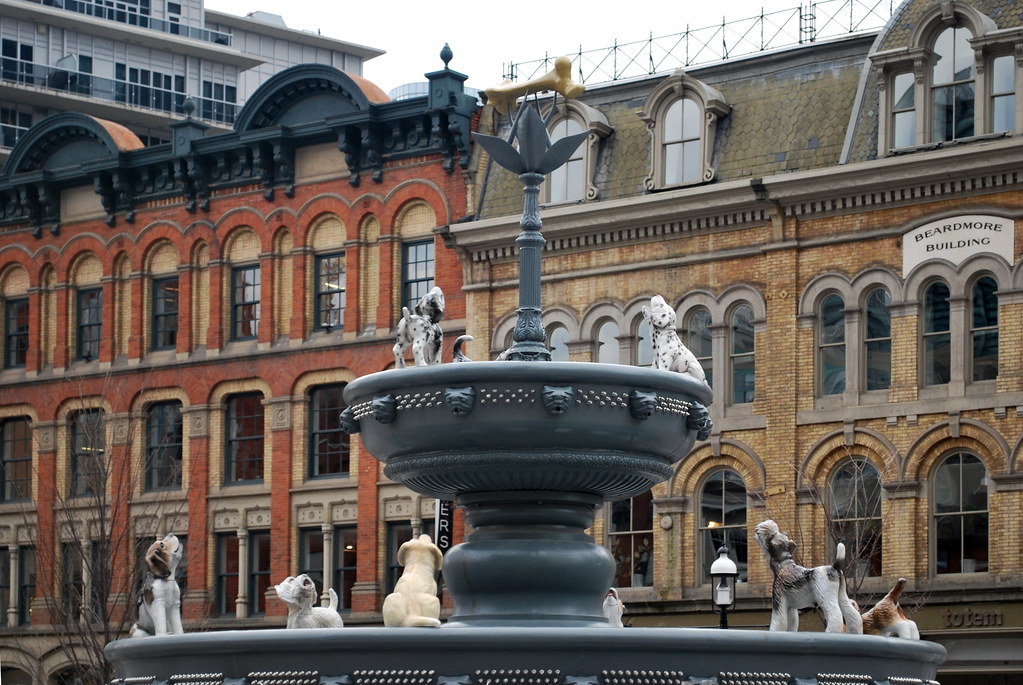 Berczy Park
Berczy Park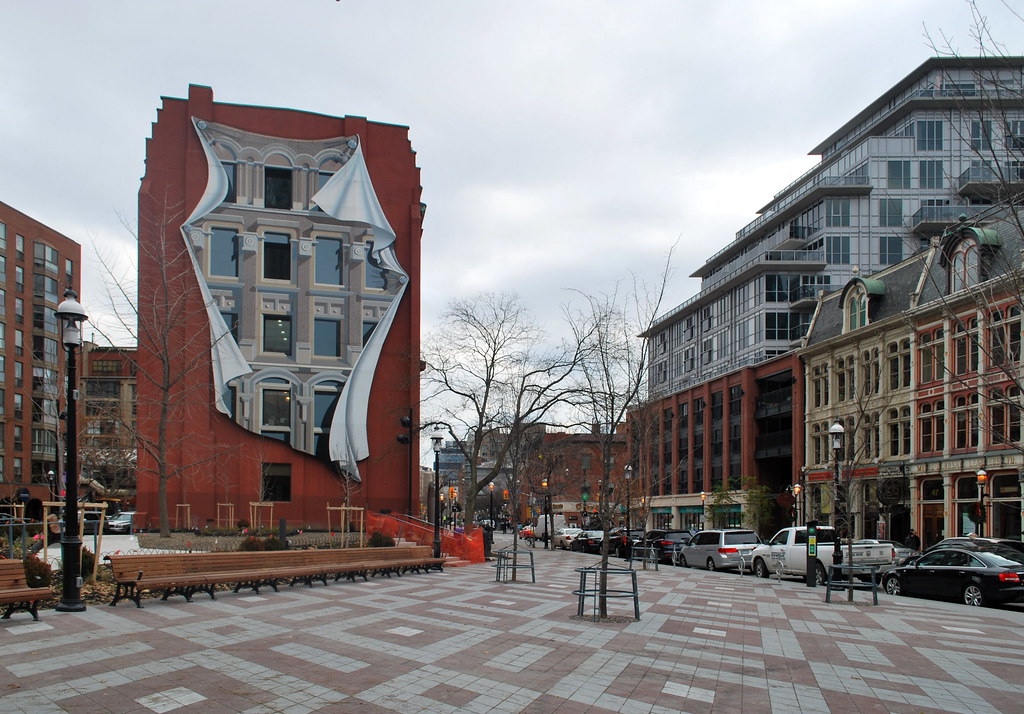 Berczy Park
Berczy Park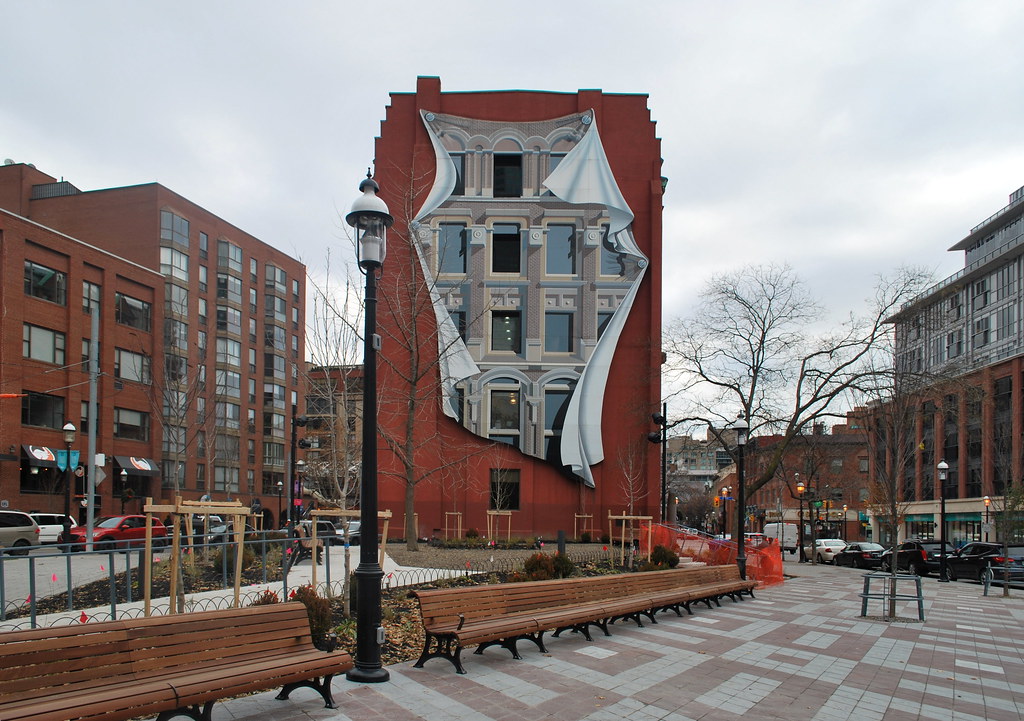 Berczy Park
Berczy Park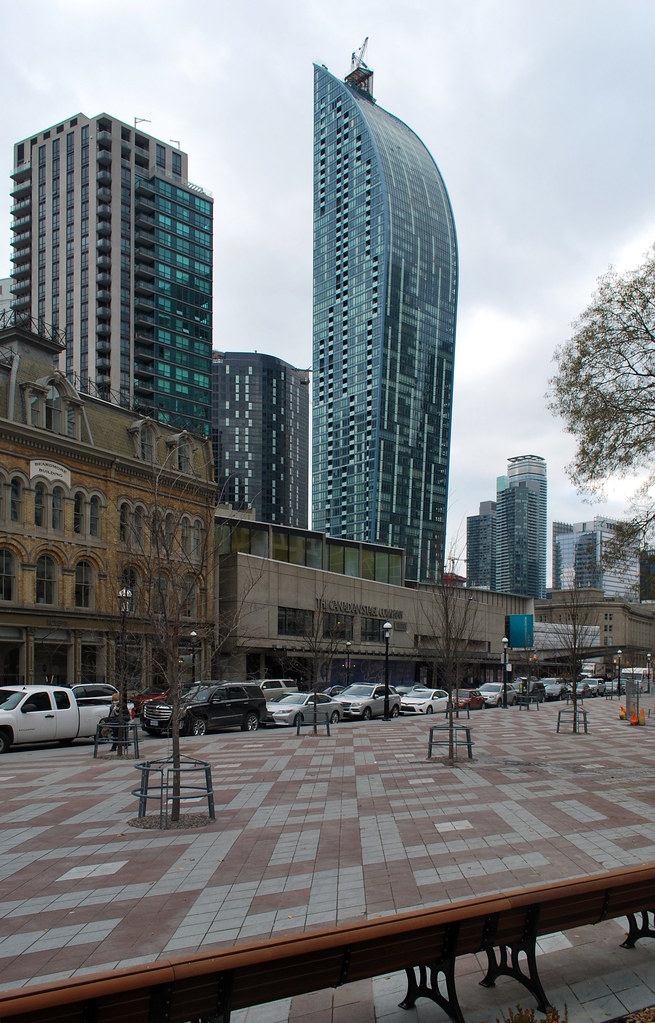 Berczy Park
Berczy Park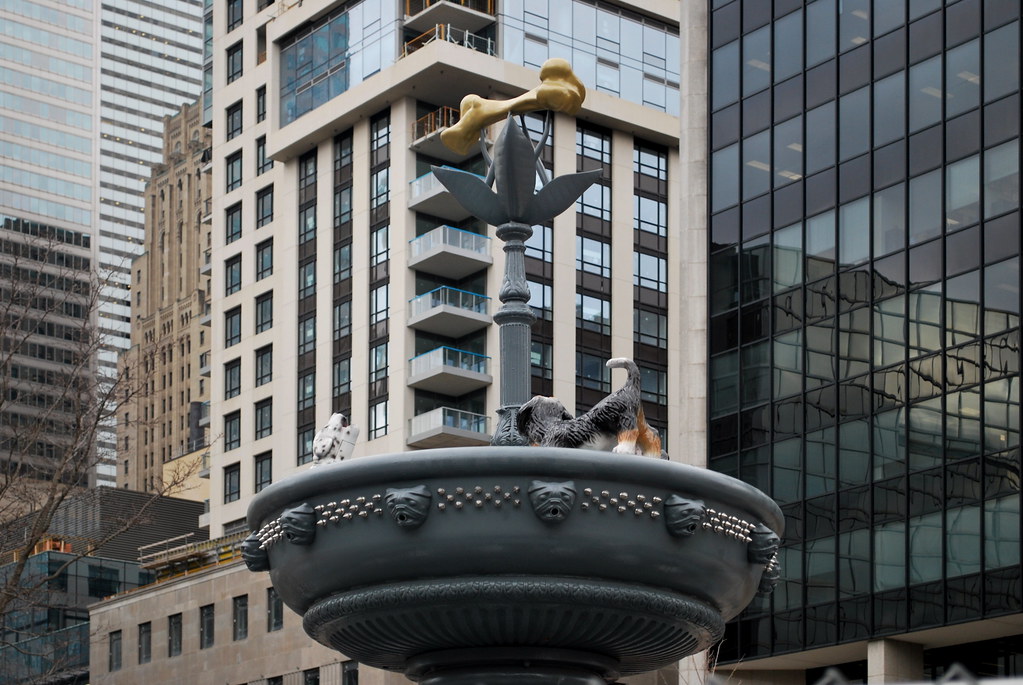 Berczy Park
Berczy Park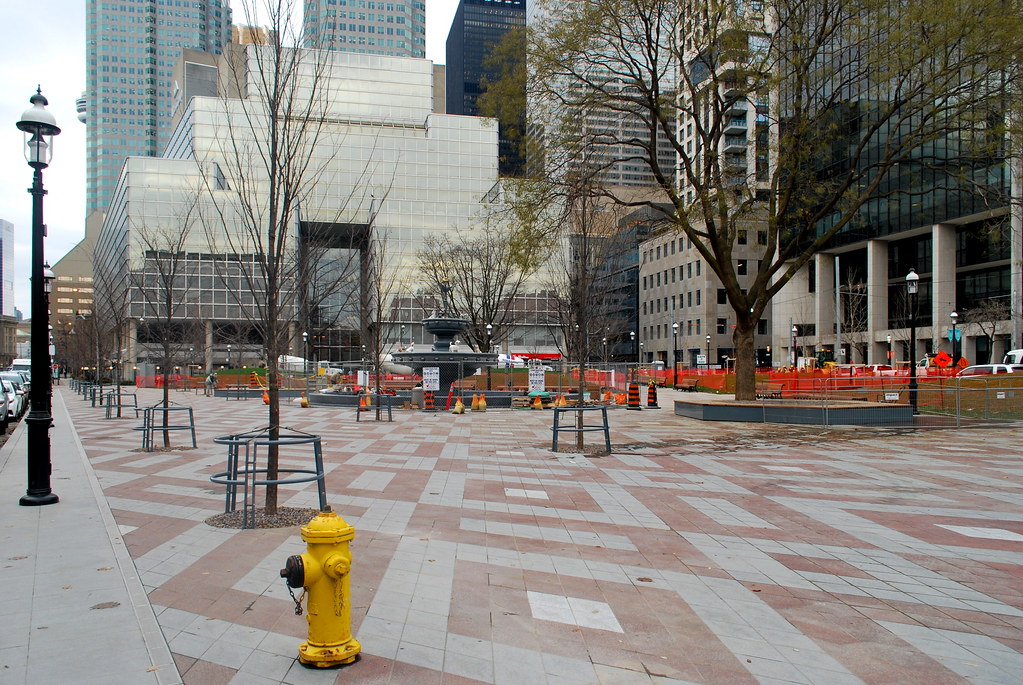 Berczy Park
Berczy Park